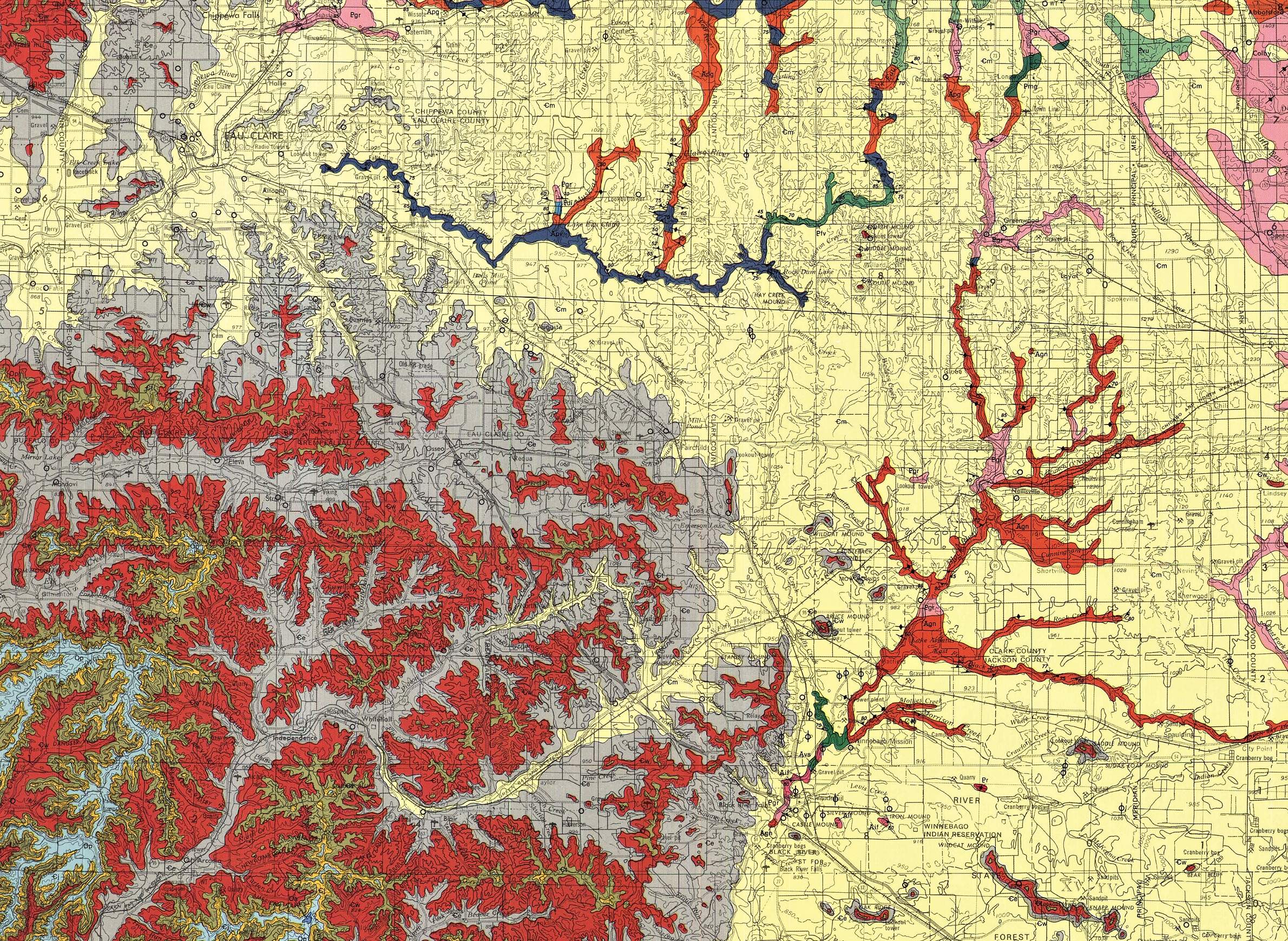
Sands found in west-central Wisconsin's bedrock are particularly well-suited for use in hydrofracturing.

Sands found in west-central Wisconsin's bedrock are particularly well-suited for use in hydrofracturing.
Although sand has been mined across Wisconsin for over a century, the large-scale mines and associated processing and transportation facilities are relatively new.
Much of the sand mined in Wisconsin in recent years is shipped to places like North Dakota, Texas, Oklahoma and several Appalachian states to be used in hydraulic fracturing, a method of extracting petroleum and natural gas from rock formations, usually deep beneath the ground's surface.
Over the early 2010s, Wisconsin saw a dramatic increase in the number of new frac sand mine and processing plant proposals. This rapid expansion was more than state and local officials were used to handling, Wisconsin Geological and Natural History Survey geologist Jay Zambito said in a Jan. 28, 2015, talk recorded for Wisconsin Public Television's University Place.
Wisconsin has voluminous sand deposits that meet specifications for use in hydraulic fracturing, which is widely known as fracking. These deposits are found among sandstone formations that are located primarily across western and central Wisconsin. Mines are sited in clusters where sands can be easily extracted at less than 100 feet beneath the ground's surface. In fact, Wisconsin has more of this sand than anywhere else in the United States, Zambito noted.
The frac sand boom in the state has raised controversies about the mining operations, over issues related to local nuisances and environmental impacts. For example, frac sand mines have raised concerns about nearby surface and groundwater levels, Zambito noted. Some counties allow companies to mine sand below the water table, which can have a greater effect on surface and groundwater than mining above it, which is more common in Wisconsin. Sand mining operations use well water to transport, wash and sort sand onsite. Although many mines recycle this water, they also pump more to replace supplies lost to evaporation and infiltration.
Zambito said a study the Wisconsin Geological and Natural History Survey has been conducting with the U.S. Geological Survey in Chippewa County examines groundwater to learn how pumping of high-capacity wells affects streams and other nearby wells. It also is studying changes in pumping rates, well placement and their effects, and how to use such information for decision-making.
Other concerns Zambito noted include future land use, economic pacts, noise from blasting or truck traffic, trucks' impact on roads, and effects on air quality from dust leaving the mine site. He also discussed the history of sand mining in Wisconsin, different rock formations around the state and their geological history, how frac sand is mined and its use in hydrofracking.
The fortunes of frac sand mining are linked with the global market for fossil fuels, which fluctuates amid international politics, growing renewable energy sources, and efficiency gains spurred by concerns about costs and climate change. It all makes for a boom-and-bust cycle. Demand for frac sand declined in 2015 and 2016 as oil prices dropped, but it's expected to increase in 2017, with a couple Wisconsin mines reopening in anticipation of new business opportunities.
Key facts
Key quotes